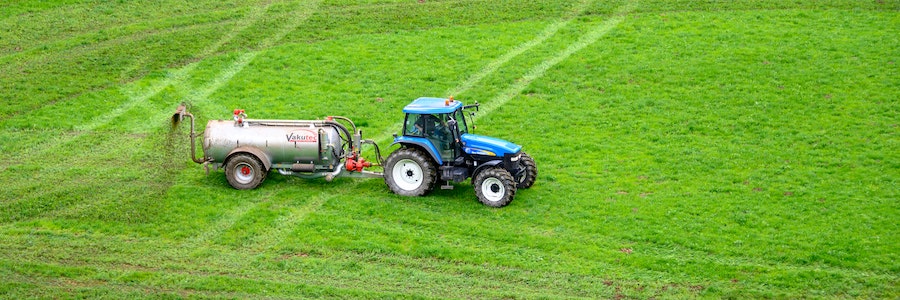The cost for fertilizer in 2022 growing season have doubled or more compared to 2021. Farmers have begun to make plans to prepare for this situation. According to five different farmers from across the country, the following approach to fertility needs to be taken into account for the coming season.
Kevin Matthews and his family own more than 5,000 acres in East Bend, North Carolina. He considers a blessing the price for ortho phosphate liquid fertilizer has only increased 12% to 15% over the last year. That’s his farm’s primary source of phosphorus, potassium, and micronutrients.
Poultry and eggs are North Carolina’s top agriculture commodity, so chicken litter is a great local option for increasing fertility and organic matter in the soil. Matthew’s family farm uses as much poultry litter as they can get, since poultry and eggs are North Carolina´s top agriculture commodity. Matthews began using this variable-rate application of fertilizer long before the prices went up, and will continue using this practice for 2022.
Chad Henderson owns a 10,000 acres farm in Madison, Alabama, where he grows corn, soybeans, and wheat. He is currently using as much chicken litter he can get. For several years, Henderson has been using variable-rate fertilizer, considering a change on his crop rotation is not as favorable to cope with fertilizer prices.
Matt Miles grows six crops in his 11,200 acres in Arkansas. As fertilizer prices have risen, he has analyzed several options.

As Henderson and Mathews, Miles has been using poultry litter back since 2006. He is not inclined to the idea of changing his crop rotations, and is still considering his options since he has several crops to choose from.
Kelly Garret owns a 6,000 acres farm of corn, soybean and winter wheat in Iowa, setting the state record for highest irrigated corn yield at 387.9 bushels per acre in 2021.
Looking ahead, Garret applied as much fertilizer he could during the fall, now trying to ensure his inventory with spring supplies, protecting himself against continued price increases.
For Lee Lubbers, prices have more than doubled since August in South Dakota. He farms about 17,000 acres of dryland soybeans, corn and wheat. He´s decided not to change fertilizer application practices in the upcoming season, sticking to the original crop rotation plan.







